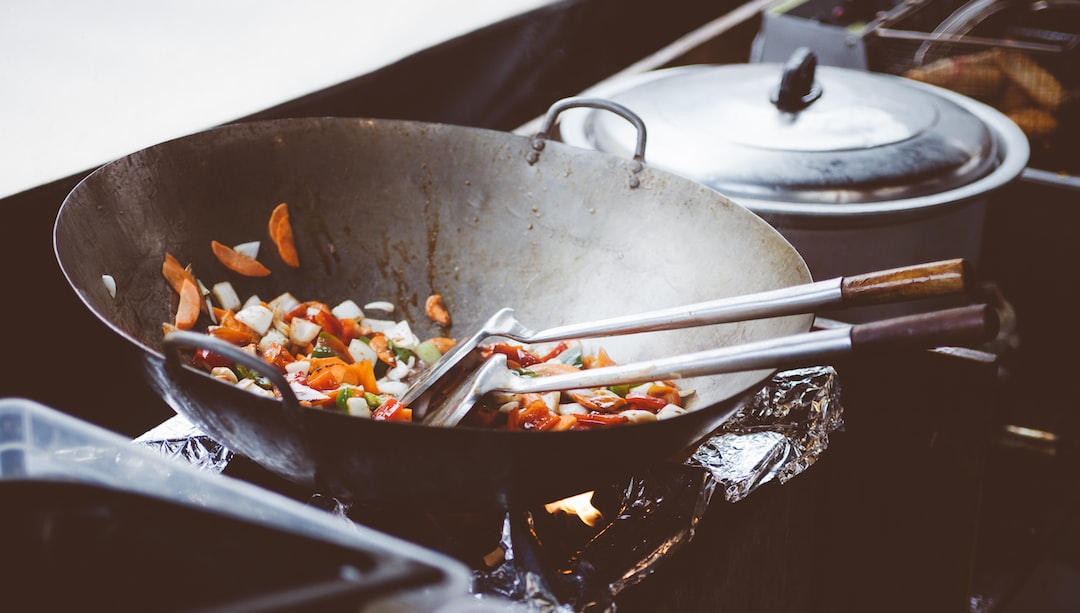Growing Asparagus in Pots: A Guide to Fresh and Flavorful Spears

Asparagus is a popular vegetable known for its unique flavor and numerous health benefits. It is a perennial plant that can produce delicious spears for up to 20 years when properly cared for. However, growing asparagus traditionally requires a large amount of space and well-drained soil. This can be a challenge for those with limited garden space or poor soil quality. Fortunately, growing asparagus in pots is a great alternative that allows anyone to enjoy this tasty vegetable.
Key Takeaways
- Growing asparagus in pots is a great option for those with limited space or poor soil conditions.
- Benefits of growing asparagus in pots include easier maintenance, better control over soil quality, and the ability to move the plants as needed.
- When choosing a pot for asparagus, look for one that is at least 18 inches deep and wide, with good drainage.
- Prepare the soil for asparagus growth by mixing in compost and ensuring proper drainage.
- Planting asparagus in pots requires spacing the crowns properly and covering them with soil, then watering and fertilizing regularly.
Benefits of Growing Asparagus in Pots
One of the main benefits of growing asparagus in pots is the flexibility it offers in terms of location and mobility. Pots can be placed on patios, balconies, or even moved around the garden to take advantage of the best sunlight. This makes it an ideal option for those with limited space or who live in apartments or urban areas.
Another advantage of growing asparagus in pots is the control it provides over soil quality and drainage. Asparagus plants require well-drained soil with a pH level between 6.0 and 7.0. By using pots, you can ensure that the soil is properly prepared and meets these requirements. Additionally, pots allow for better control over watering, preventing waterlogged soil which can lead to root rot.
Pests and diseases can also be a problem when growing asparagus in the ground. By growing them in pots, you can protect your plants from common pests such as slugs and snails, as well as diseases like fusarium wilt and rust. This can help ensure healthier plants and higher yields.
Lastly, growing asparagus in pots extends the growing season. Asparagus is typically harvested in the spring, but by using pots, you can bring them indoors during colder months or move them to a greenhouse or protected area. This allows you to enjoy fresh asparagus for a longer period of time.
Choosing the Right Pot for Asparagus
When choosing a pot for growing asparagus, there are a few factors to consider. First, you’ll need a pot that is large enough to accommodate the deep root system of asparagus plants. A pot with a diameter of at least 18 inches and a depth of 12-18 inches is recommended.
There are various material options for pots, including plastic, ceramic, and terracotta. Plastic pots are lightweight and retain moisture well, but they may not be as aesthetically pleasing. Ceramic and terracotta pots are more visually appealing but can be heavier and may require additional drainage holes.
Drainage is an important consideration when choosing a pot for asparagus. Make sure the pot has drainage holes at the bottom to prevent water from pooling and causing root rot. If the pot does not have drainage holes, you can drill them yourself or use a layer of gravel at the bottom to improve drainage.
Preparing the Soil for Asparagus Growth
| Soil Preparation Method | Effectiveness | Cost |
|---|---|---|
| Tilling | High | |
| Cover Cropping | Medium | |
| Composting | High | |
| Soil Solarization | High |
Asparagus plants require well-drained soil with a pH level between 6.0 and 7.0. Before planting, it’s important to prepare the soil in your pots to ensure optimal growing conditions.
Start by filling the pots with a high-quality potting mix that is rich in organic matter. You can also add compost or well-rotted manure to improve soil fertility and drainage. Mix these amendments thoroughly with the potting mix before planting.
It’s also a good idea to test the pH level of your soil using a soil testing kit. If the pH level is too low or too high, you can adjust it by adding lime to raise the pH or sulfur to lower it. Aim for a pH level between 6.0 and 7.0 for optimal growth.
Planting Asparagus in Pots: Step-by-Step Guide
Once you have prepared the soil, you can proceed with planting your asparagus crowns. Here is a step-by-step guide to help you get started:
1. Choose healthy asparagus crowns from a reputable nursery or garden center. Look for crowns that are firm and free from any signs of disease or damage.
2. Prepare the pots for planting by filling them with the prepared soil mixture, leaving about 2 inches of space at the top.
3. Dig a trench in the center of the pot that is about 6 inches deep. Place the asparagus crowns in the trench, spacing them about 12-18 inches apart.
4. Cover the crowns with soil, making sure they are completely covered but not buried too deeply. The top of the crown should be level with the soil surface.
5. Water the pots thoroughly after planting to settle the soil and provide moisture to the newly planted crowns.
Watering and Fertilizing Asparagus in Pots

Proper watering is essential for the growth and development of asparagus plants. They require consistent moisture but should not be overwatered, as this can lead to root rot.
Water your asparagus pots deeply once or twice a week, depending on weather conditions. The soil should be moist but not waterlogged. To check if your plants need water, stick your finger about an inch into the soil. If it feels dry at that depth, it’s time to water.
Fertilizing asparagus plants in pots is also important to ensure healthy growth and high yields. Use a balanced fertilizer with equal amounts of nitrogen, phosphorus, and potassium. Apply the fertilizer according to the manufacturer’s instructions, usually every 4-6 weeks during the growing season.
Avoid over-fertilization, as this can lead to excessive foliage growth at the expense of spear production. It’s better to slightly under-fertilize than to overdo it.
Pruning and Harvesting Asparagus in Pots
Pruning asparagus plants is necessary to maintain their health and productivity. In the first year after planting, it’s important to allow the spears to grow without harvesting. This allows the plants to establish a strong root system.
In the second year, you can start harvesting spears when they reach a height of about 6-8 inches. Cut the spears at ground level using a sharp knife or scissors. Harvesting should be done regularly, every 2-3 days, to encourage the production of new spears.
At the end of the growing season, after the foliage has turned yellow and died back, prune the plants by cutting them down to ground level. This helps prevent diseases and prepares the plants for dormancy.
Common Problems and Solutions for Asparagus in Pots
Asparagus plants can be susceptible to various pests and diseases. Some common problems include aphids, slugs, snails, fusarium wilt, and rust.
To prevent aphids, regularly inspect your plants and remove any infested leaves or stems. You can also use insecticidal soap or neem oil to control aphid populations.
Slugs and snails can be controlled by placing copper tape around the pots or using organic slug pellets. You can also create barriers using crushed eggshells or diatomaceous earth.
Fusarium wilt and rust are fungal diseases that can affect asparagus plants. To prevent these diseases, make sure your pots have good drainage and avoid overwatering. If you notice any signs of disease, remove and destroy affected plants to prevent further spread.
Tips for Maintaining Healthy Asparagus Plants in Pots
To keep your asparagus plants healthy and productive, there are a few maintenance tasks you should regularly perform.
Monitor soil moisture levels by checking the soil regularly. Water when the top inch of soil feels dry to the touch.
Monitor soil pH levels using a soil testing kit. Adjust the pH if necessary to maintain optimal growing conditions.
Protect your plants from extreme weather conditions, such as frost or heatwaves. Move them indoors or provide shade or insulation as needed.
Regularly inspect your plants for signs of pests or diseases. Early detection and treatment can help prevent further damage.
Enjoying Fresh and Flavorful Asparagus from Your Pots
Once you have successfully grown asparagus in pots, it’s time to enjoy the fruits of your labor. Asparagus can be enjoyed in a variety of ways, from simple steaming or grilling to incorporating it into salads, stir-fries, and pasta dishes.
To cook asparagus, simply trim off the tough ends and steam or boil until tender-crisp. You can also grill or roast them for a delicious smoky flavor. Asparagus pairs well with a variety of flavors, such as lemon, garlic, Parmesan cheese, and bacon.
By growing asparagus in pots, you can enjoy fresh and flavorful spears throughout the growing season. Whether you have limited space or poor soil quality, this versatile vegetable can thrive in pots with proper care and attention. So why not give it a try and start growing your own delicious asparagus today?
If you’re interested in learning more about growing asparagus in a pot, you might find this article from Lawn World helpful. It provides a comprehensive guide on how to successfully grow asparagus in containers. From choosing the right pot size to selecting the appropriate soil mix, this article covers all the essential steps to ensure a bountiful harvest of delicious asparagus spears. Check out the article here for expert tips and advice on cultivating asparagus in pots.



